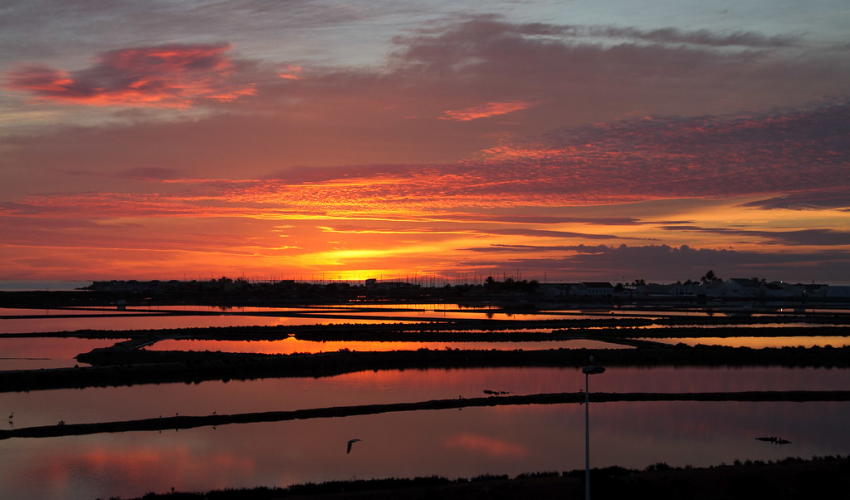San Pedro del Pinatar

San Pedro del Pinatar is at the touristic heart of the Costa Cálida. Situated between the Mar Menor and the Mediterranean Sea, this small seaside town is famous for its fishing background, therapeutic mud baths, salt flats and vast stretches of sand.
Located at the northern end of the Mar Menor, its name comes from a small church the fishermen dedicated to San Pedro in an area of pine trees. With its agricultural and fishing character, still carried on today, this is a great town where history and modern technology meet.
It has busy tourist activity in the summer especially in Lo Pagán, where its mud baths are particularly famous and good for your health. San Pedro del Pinatar continues to be a very popular Spanish holiday destination and the population increases during the summer months as people from Madrid (and other Spaniards) with second homes descend on the area. Lots of free entertainment is provided by the council.
The area is also famous for its salt lagoons where you can see rare birds and flocks of flamingoes going about their daily rituals.
Its history stretches back to the Roman era, from which remains of houses have been discovered and during which the exploitation of the salt flats of Coterillo was begun; salt flats which are still working today. These wetlands were formed with the dunes and the beach of La Llana. This is also the oldest of the Regional national parks of Murcia. It is also a refuge for over one hundred bird species, among which the flamingo is worthy of particular mention.
Besides the park, where it is possible to observe the fauna and flora as well as unique constructions such as the salt mills, it is also worth paying a visit to stately homes such as the Casa del Reloj, which was home to the death of Emilio Castelar, the Palace of Villar de Felices, the Ethnographical Archaeological Museum and the Fish Market.
Monuments and places of interest
1.Ethnographic Archaeological museum (Calle Dr. Mirón de Castro: It contains paleontological fossils, objects, etc. It has an exclusive room for submarine archaeology and another one for the ethnographic type dedicated to the last centuries (from the 18th century).
- Museum of the Sea: marine and marine article collections.
- Conservation and research center of the Humedales “Las Salinas” (Avda. de las salinas): it offers interesting exhibitions on the natural park and the work in the salt mines.
- “Casa del reloj” or Villa of San Sebastian (Avda. Artero Guirao): an example of modernist architecture. The Spanish president, Emilio Castelar y Ripoll, died here in 1899. Since the end of the 20th century it has been reconstructed and turned into a restaurant.
- Church of San Pedro Apostle (Plaza de la Constitucion): it is a temple that became a Franciscan hermitage in the 17th century.
- Palace of counts Villar de Felices or Casa of the Russian (C/ Victor Pradera s/n): building in neo-mudéjar style constructed in the 19th century by order of Baron de Benifalló.
- Fish Market in Lo Pagán (Explanada of Lo Pagán): a traditional fish auction can be seen here.
8. The “Salinas y Arenales” natural park.

 Spanish
Spanish German
German Dutch
Dutch